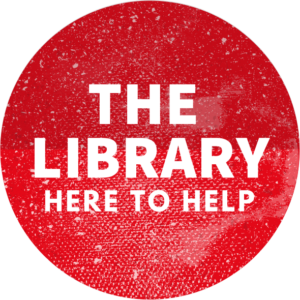Professor James Charles is a very proud Kaurna man from the Adelaide Plains, South Australia. Currently the Director of the First Peoples Health Unit, Prof Charles was one of the first Aboriginal podiatrists in Australia, the first Aboriginal person to receive a Master of Podiatry, and the first Aboriginal podiatrist to receive a PhD. In our first researcher profile for 2024, we learn about his research journey and the passion that’s driven him to devote his career to improving Aboriginal health outcomes.
What path led you to becoming a researcher?
My journey into research was a roundabout path. Initially, I didn’t have grand plans for a research-focused career. The turning point came after my undergraduate studies in podiatry. Working as a podiatrist in Aboriginal communities, I saw significant foot health issues that demanded further investigation. Motivated by this, I decided to pursue a masters degree, but opting for coursework rather than research so I could delve deeper into podiatry as a practice.
During my masters, an opportunity arose for a research project, which I was initially hesitant to undertake. However, witnessing the pressing foot health issues in communities propelled me to embrace the challenge. And the project was a success, marked by my first publication and kindling a bit of a passion for research.
This experience led me to engage in more research projects informally as part of my professional work. Encouragement from peers eventually nudged me toward pursuing a PhD in podiatry. My doctoral research focused on Aboriginal foot health, addressing the complex issues I had witnessed. I came to the realisation that by doing research you really get the best bang for your buck — you can make the greatest contribution to solving, or being part of the solution, by looking at the bigger picture through research rather than by just helping people individually. I haven’t really looked back since.
Can you tell us a bit about the projects you are currently working on?
In Aboriginal communities, the prevalence of diabetic foot ulceration (non-healing wounds on the foot) along with associated infections and amputations, is disproportionately high compared to non-Aboriginal populations. And this has become an increasingly pressing concern. Through my PhD and various research projects, we’ve identified a biomechanical aspect contributing significantly to the escalating rates of diabetic foot complications.
Our research delves beyond the realm of diabetes alone, recognising that, while diabetes rates are three to four times higher in Aboriginal populations, some core issues lie in biomechanical aspects. Specifically, a reduced range of motion at the ankle emerged as a critical factor. Some individuals experience limitations in moving their foot upward. This restriction leads to increased foot pressure, resulting in breakdowns, ulcers, infections, and in the worst case, amputations.
Measuring this range of motion posed a challenge. Existing devices in the market were either expensive or impractical. To address this, we undertook the task of developing a more affordable device. This journey involved overcoming obstacles, including reducing the costs of 3D printing. The device, now in development, aims to be a cost-effective solution accessible to communities.
Aside from this, I’m involved in diverse projects that reflect my commitment to addressing broader health issues in Aboriginal communities. My primary objective is to always make a meaningful contribution to community wellbeing by addressing their unique health needs. As the Director of the First Peoples Health Unit, my responsibilities extend to nurturing community connections, expanding the Aboriginal and Torres Strait Islander health workforce, and ensuring the academic and professional success of students.

Image courtesy of James Charles
What sparked your passion for this research area?
Witnessing decisions on funding and service provisions that may not align with community preferences is part of what sparked my passion. Being an Aboriginal community member, particularly in my hometown of Adelaide, where I witnessed my community grappling with healthcare challenges, I wanted to be part of the solution. The struggle becomes more profound when it involves family and those you are close to. Sometimes pain and suffering sort of recede to the background or you become a bit desensitised to it, but that’s much, much harder when you’re related to those people or connected to the community.
Decisions have been made around the funding of a particular service or what’s being provided, and that may or may not reflect what the community wants but they’re kind of stuck with it. So, I’ve always tried to engage with Aboriginal elders in research projects to understand their experiences with services and use Aboriginal research methods, such as yarning, to help uncover any gaps. These personal connections to issues in my community and their challenges are essentially what drive me.
Do you have any advice for researchers just starting out?
I think the most important thing is that you must have a genuine passion for whatever you are researching. Starting out in research is undoubtedly challenging, so this is the most important thing and it’s really non-negotiable. Undertaking higher degree research, at whatever level, is arduous, making it crucial to choose a topic where the outcome driving you is to solve a problem rather than just to achieve a qualification. Your passion will be a guiding light during difficult times, helping you to overcome the obstacles and barriers you’ll inevitably face. I also recommend connecting with individuals who share or appreciate your passion, as a supportive network is a valuable resource. So, find projects that resonate deeply and drive you to unearth answers and contribute meaningful solutions. Collaborating with like-minded people will further enhance your research journey and increase the likelihood of your success.
Griffith is proud to produce world-class research contributing to the Sustainable Development Goals







